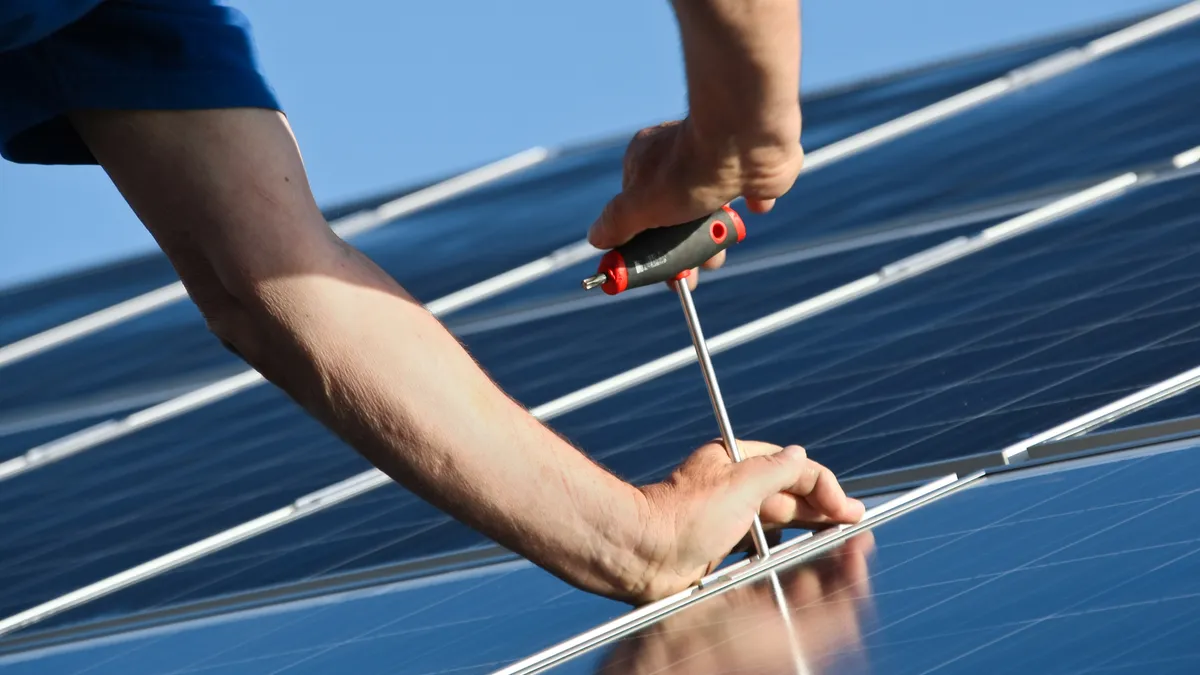Dive Brief:
- The Los Angeles Department of Water and Power (LADWP) will buy most of the electricity produced by the nation's largest rooftop PV solar project to date, PV Magazine reports. The 16.4 MW project is slated to be built by developer PermaCity on four warehouses in the San Pedro community.
- The project will generate an estimated $76 million in revenue paid by LADWP for its output, with 85% to 90% going to the building owner under the 20-year power purchase agreement. The array is forecasted to create $400,000 per year in electricity bill savings for the building and is expected to be online by year's end.
- The project is also reportedly the largest solar array in the U.S. to be built under a residential feed-in-tarrif (FiT) program. The 150 MW Los Angeles FiT pilot program was launched in 2013 and has resulted so far in 23 projects with a cumulative capacity of 14 MW.
Dive Insight:
Though there are larger rooftop plants overseas, NRG Energy claimed the title of developer of the largest U.S. rooftop solar array in 2014 with a 6.4 MW system atop the Mandalay Bay Casino in Las Vegas, Nevada. PermaCity currently has the largest one in Los Angeles — a 5.1 MW installation on a Forever 21 store.
Both those projects would be dwarfed by the 16.4 MW installation planned in San Pedro. Though the building owner was not disclosed, the broker who worked on the deal told the LA Business Journal that the owner reviewed several solar proposals and decided the LADWP tariff program was best.
The LA muni is planning 300 MW of new FiT capacity as part of a 800 MW solar target by 2020. When complete, it will have attracted $500 million in direct private investment for the city, according to a new report by the Los Angeles Business Council Institute (LABCi).
There are five other U.S. FiT programs, according the LABCi report. At $0.13/kWh, the LADWP program is presently the lowest cost program among them. The state of Rhode Island program is just over $0.20/kWh, and those from New York’s Long Island Power Authority, the Northern Indiana Public Service Company and the municipal utilities for Fort Collins, Colo. and Palo Alto, Calif. are at or just over $0.16/kWh.
A key to the L.A. program success, according to the report, is that 40% of its completed and pipeline projects are located within “solar equity hotspots,” or areas of the city with abundant rooftops and large low-income populations in need of jobs and new economic opportunities. The program is designed to deliver jobs where the installations are done by creating community training programs.













